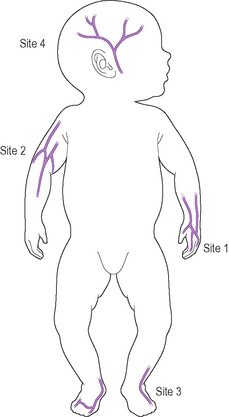Chapter 33 Venepuncture and cannulation
INTRODUCTION
In the majority of circumstances, children’s nurses are now undertaking venepuncture and cannulation as part of the holistic approach to patient care. Nurses undertaking extended practice must be appropriately trained and fit for purpose (RCN 2005, NMC 2008). However, nurses may also assist medical staff in this procedure by providing support to the child during the procedure.
LEARNING OUTCOMES
By the end of this section you should be able to:
RATIONALE
Obtaining access to the blood vessel of a child is a relatively common occurrence within paediatric practice. However, it should be borne in mind that obtaining a blood sample or insertion of an intravenous cannula is a traumatic and distressing event for the child and parents. The children’s nurse plays an important role in performing this procedure with the necessary support and comfort to the child and/or parents but also provides expert assistance to any healthcare professional obtaining the blood sample or inserting the intravenous cannula. Firm support of the child will help to reduce the distress that they may be experiencing, bearing in mind the need to avoid excessive restraint (RCN 2003). More commonly, children’s nurses, in a variety of settings, are extending their scope of professional practice to include such areas as venepuncture and intravenous cannulation.
Guidance from the Nursing and Midwifery Council (NMC) emphasises knowledge and skills as prerequisites for taking the responsibility for practice (NMC 2008).
FACTORS TO NOTE
Stay updated, free articles. Join our Telegram channel

Full access? Get Clinical Tree



